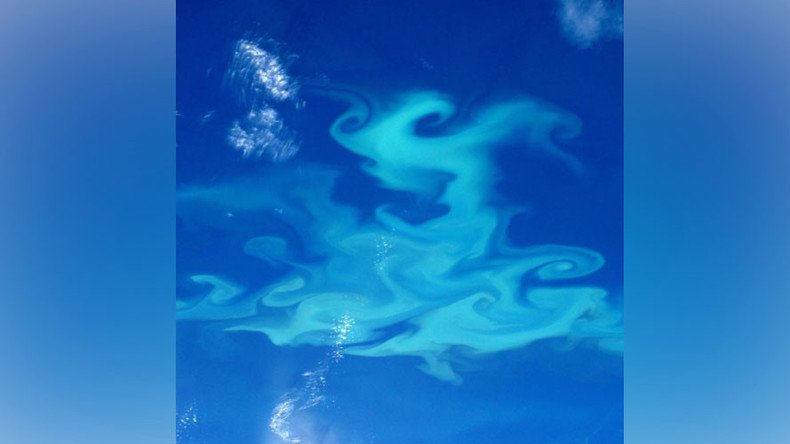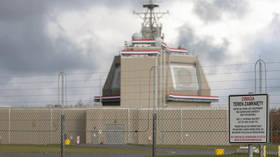Astronaut Peake snaps monster Patagonian plankton bloom from space (PHOTO)

British astronaut Tim Peake has captured a strangely hypnotizing image of a plankton bloom swirling off the coast of South America.
The massive gathering of microscopic fish food resembles a floating ‘vampire mist’ from a 1960s Star Trek episode.
However, the swirling mass of organisms is not a Dikironium cloud creature about to feast on humans, but a rather entrancing marine phenomenon known as a phytoplankton bloom.
European Space Agency (ESA) astronaut Tim Peake, who is currently on a six-month mission to the International Space Station (ISS), posted the mesmerizing aerial image alongside a picture of the O’Higgins and San Martín lakes in Patagonia.
Another great pass over Patagonia and a swirling plankton bloom off the coast. https://t.co/J0ce5WzZ2Opic.twitter.com/ukdosp9Jxo
— Tim Peake (@astro_timpeake) April 4, 2016
Groups of rapidly reproducing plankton and algae can be found in coastal regions, lakes and canals.
According to the US National Oceanic and Atmospheric Administration, the organisms float just beneath the surface of the water, with sunlight bouncing off and feeding the bloom, often giving it a green or blueish hue.
Blooms can have a positive and negative impact on the environment, depending on the materials swirling within them.
Champagne Supernova: Gigantic exploding star finally captured in the act (VIDEO)
Some cluster of vegetation provide a valuable food source to sea creatures, while other rotting organisms, described as harmful algal blooms, can give off toxins poisonous to humans and animals.
Peake’s latest image has left Twitter users dumbfounded at how such small living creatures can create an astonishing photo from space.
.@QueenKika@astro_timpeake Quite right 👍 An excellent demonstration that life doesn't have to be a mighty size to have a mighty influence.
— Richard Kirby (@PlanktonPundit) April 4, 2016
@astro_timpeake the blue is way so cool
— Sabrina Selva (@SabrinaSelva1) April 4, 2016
@astro_timpeake wow you are sharing some amazing photos!
— Julie Sutcliffe (@JoolySut) April 4, 2016
Peake has been in space a total of 16 weeks now, as part of the six-month Principia mission to carry out experimental research on the ISS.
The British Army officer is due to rocket back to earth in June.












